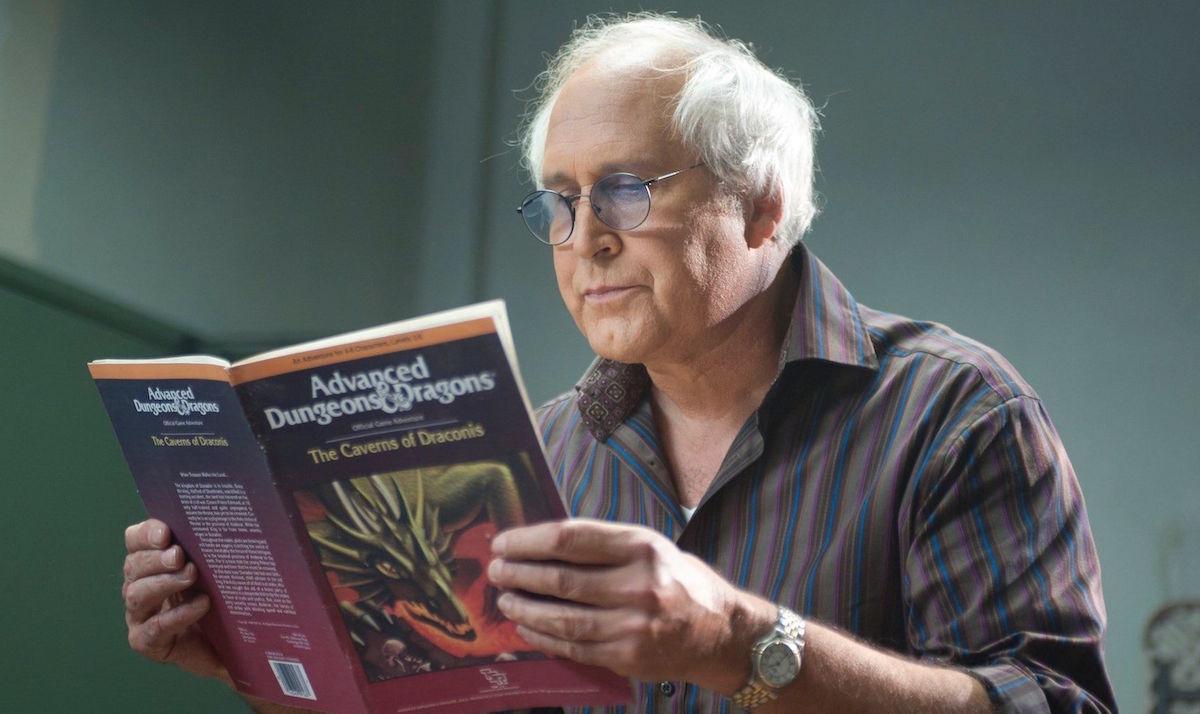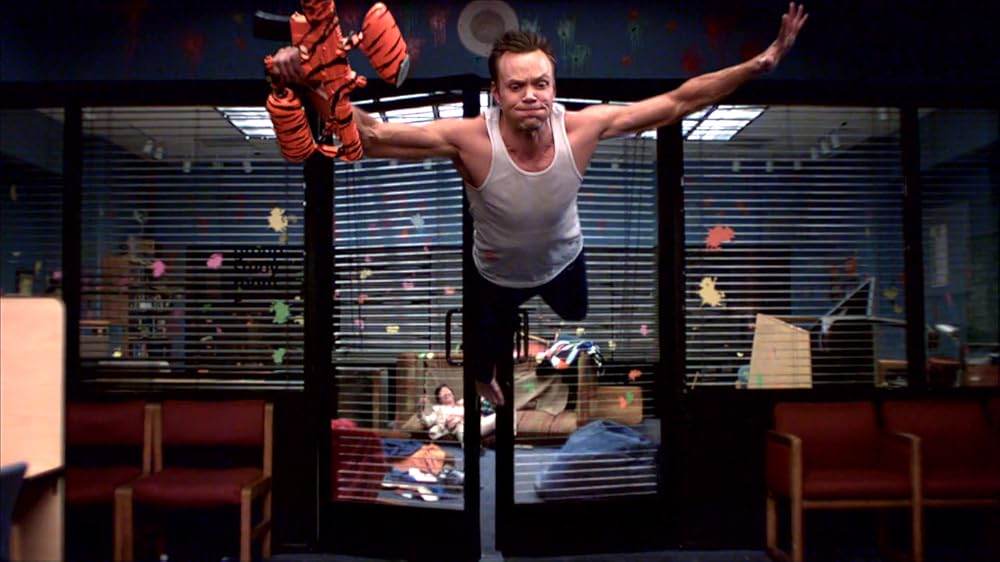
In 2009, Dan Harmon introduced us to the TV series Community. Initially, it seemed like another NBC sitcom focusing on oddballs at a community college. However, it quickly proved to be something extraordinary. Across its six seasons, it presented some truly innovative moments in television and skillfully blended pop culture references. It established itself as a unique blend of genre-bending, fourth-wall-breaking, and heartfelt comedy, earning the status of a beloved cult classic. Even today, it seems to be ahead of its time.
As a dedicated movie buff, I’ve got to say that “Community” is an extraordinary TV show that never fails to amuse me with its clever, quirky, and endearing episodes. It pushes the boundaries of what a sitcom can be, taking us on adventures from intense paintball battles to mind-bending parallel timelines. Whether you’re a seasoned fan or just joining the student body at Greendale Community College, there’s something for everyone in this hilarious series. And as we delve deeper into the world of “Community,” let’s try to pick out the 10 most outstanding episodes that truly stand out.
10) “Basic Rocket Science” (Season 2, Episode 4)

In the realm of its unique humor, Community was particularly renowned for its talent in satire. This space-themed send-up follows the study group’s ambitious plan to revive Greendale Community College’s space program. However, the line between comedy and reality becomes blurred when they find themselves stranded within a simulator rocket branded as Kentucky Fried Chicken, a deception cleverly contrived by their competitors at City College.
In truth, “Basic Rocket Science” isn’t making fun of the space story genre; rather, it’s a heartfelt homage to timeless space films and NASA biopics like “Apollo 13.” The humor lies in details such as the simulator being furnished with an onboard computer system named S.A.N.D.E.R.S. (Systematic Android Network Diode Energy Rocket Systems). Furthermore, I find myself experiencing the same disorientation that Pierce encounters in zero gravity. Yet, it’s the emotional depth that Troy brings to his role as a leader that truly resonates.
In this particular installment, it’s evident that the program was making a significant artistic advancement. According to the series creator Dan Harmon, this episode played a crucial role in defining Community‘s unique identity beyond typical sitcom conventions, thereby earning its place on this selection.
9) “Digital Estate Planning” (Season 3, Episode 20)

In this scenario, when Pierce’s inheritance becomes uncertain, the study group finds themselves unexpectedly transported into a vintage video game world created by Pierce’s deceased father, Cornelius. This game serves as a climactic trial to determine Pierce’s worthiness. The episode masterfully combines old-school gaming aesthetics with the humorously character-driven charm that Community is known for, creating a heartfelt homage to classic video games. Each character traverses the pixelated realm, encountering digital adversaries and ethical dilemmas that expose hidden aspects of loyalty, heritage, and friendship. The episode’s creative animation, witty dialogue, and intricate storytelling make it one of the series’ most innovative and emotionally impactful forays into genre exploration.
As a devoted fan, I must share that the final episode filmed for Season 3 held a poignant ending that didn’t quite pan out as planned. Regrettably, a heated disagreement between creator Dan Harmon and Chevy Chase tainted the last moments. Originally, there was another scene intended for the end credits. It would have featured Abed bestowing Pierce with a customized game on a flash drive. In this modified version, the digital Pierce would’ve been seen playing catch with his father’s giant head, an action that Cornelius would’ve celebrated. Each time, Pierce would’ve turned to acknowledge and thank Abed in a heartwarming display of gratitude. This emotional scene was meant to serve as the episode’s conclusion but unfortunately, Chevy Chase opted out, citing exhaustion.
8) “Contemporary American Poultry” (Season 1, Episode 21)

Celebrated as the point where the series Community entered legendary status, largely due to a daring chicken finger heist reminiscent of the mafia movie Goodfellas. The gang took over the supply of chicken fingers in Greendale’s cafeteria.
In a modern twist set in Greendale’s cafeteria, “Contemporary American Poultry” portrays an illicit chicken finger operation – with Abed as the cunning mastermind adopting a mob-boss alter ego. The narrative style, incorporating Scorsese-esque voiceovers and leisurely food shots, is spot-on, while the heart of the story (Abed orchestrating the scheme to foster connections with his friends) offers an unexpected layer of emotion.
7) “Advanced Dungeons & Dragons” (Season 2, Episode 14)

In this well-loved episode, the team participates in an emotionally charged game of Dungeons & Dragons to rescue a classmate from despair. Dealing with themes like acceptance, bullying, and camaraderie, the episode manages to be both laugh-out-loud funny and profoundly moving. Although no dice were physically displayed on screen, the tension was palpable. The situation felt genuinely high-stakes.
An episode like ‘Advanced Dungeons & Dragons’ is what truly sets ‘Community’ apart. This show possesses an exceptional knack for delving into profound and poignant themes, such as depression and empathy, using popular culture references, like the classic tabletop role-playing game in this instance. This episode serves as a testament to their skill, as the initial game setup evolves into a heartfelt, emotional adventure centered around ‘Fat Neil.’
Despite facing criticism and being temporarily taken down from streaming platforms over a questionable character scene involving Chang, this episode stands out as one of the most groundbreaking examples of creative format and storytelling the show has ever achieved.
6) “Abed’s Uncontrollable Christmas” (Season 2, Episode 11)

Abed’s Unstoppable Holiday” delves into Abed Nadir’s inner psyche, transforming the gang into figures reminiscent of Rankin/Bass-style clay animation, as he grapples with his feelings of solitude during the festive season. Instead of being a mere novelty, this portrayal conveys one of the series’ most profound messages about camaraderie and faith.
In awe, many fans admired the impressive craftsmanship as Harmon and his team managed to create an emotionally intense and visually captivating holiday special on a network sitcom with just 21 minutes. By the finale, not even the most cynical viewers could resist shedding a tear at the touching blend of humor, drama, and magic unfolding before them.
5) “Cooperative Calligraphy” (Season 2, Episode 8)

Among the series’ most brilliantly crafted episodes, titled “Cooperative Calligraphy”, stands out as a testament to the show’s exceptional writing. The entire story unfolds within the study room, where the characters are trapped, frantically searching for Annie’s lost pen. Each scene is meticulously timed and features sharp, humorous dialogue, demonstrating the ensemble cast’s remarkable chemistry. It serves as a prime example that Community could produce excellence even within one room. Abed himself acknowledges this trope: “This is a bottle episode.
4) “Modern Warfare” (Season 1, Episode 23)

The inaugural paintball event, masterfully directed by Justin Lin (known for Fast Five and Star Trek Beyond), titled “Modern Warfare”, transformed a mere college-wide paintball game into an action movie tribute reminiscent of Die Hard. Featuring elements like John Woo’s signature slow motion sequences and dramatic standoffs, it served as the prototype for every subsequent episode in the series. By skillfully combining action movie tropes with humor, it not only provided endless laughter but also set a high standard for future paintball episodes. This groundbreaking episode left an indelible mark on the series, becoming one of its most memorable moments.
3) “Pillows and Blankets” (Season 3, Episode 14)

The documentary-style presentation of “Pillows and Blankets” chronicles the escalation of conflict between Troy and Abed, sparked by an argument over their DIY fort, which eventually leads to mayhem and a widespread campus battle reminiscent of a full-scale war.
Portrayed with an exaggerated sense of drama and accompanied by melancholic music, this episode transforms a trivial dispute into a battle of beliefs – and manages to make it laugh-out-loud funny. It’s a marvelous demonstration of Community‘s knack for turning the ordinary into extraordinary. Balancing humor with emotion, the mockumentary style beautifully showcases the series’ unique charm and wit.
2) “For a Few Paintballs More” (Season 2, Episode 24)

The climactic paintball game in Season 2 was nothing short of a thrilling spectacle. The sequel, titled “For A Few Paintballs More”, unfolds after the events of “A Fistful of Paintballs”. It presents a dynamic blend of Wild West and Star Wars-inspired combat, as Greendale students take on an army from City College.
This episode doesn’t merely satisfy with action and genre references; it also strengthens the relationships within the group, offering significant moments such as Jeff motivating his team, Pierce’s emotional farewell, and stormtrooper-like enemies receiving a humorous comeuppance. Filled with exhilarating action, witty humor, and poignant character developments, it embodies an iconic confrontation that symbolizes the distinctive narrative style of Community.
1) “Remedial Chaos Theory” (Season 3, Episode 4)

In my opinion, among all the episodes from Community, none is more revered than “Remedial Chaos Theory.” It’s reminiscent of Marvel’s “What If,” but instead of superheroes, it revolves around a lively group of community college students. This episode, with its clever plot and timeless charm, embodies the essence of what makes Community so beloved—its wit, emotion, and limitless imagination.
The storyline may seem straightforward at first glance: they toss a coin to determine who fetches the pizza. However, with each flip, we delve into seven interconnected realities, revealing how even minor alterations can cause significant waves in the group’s dynamics.
This episode abounds in references, nods to past events, and moments ripe for memes. From the infamous “Darkest Timeline” (featuring typical villainous goatees) to Troy stumbling upon a fire while retrieving the pizza, it’s full of hidden gems. The idea of the “Darkest Timeline” from this episode also shaped subsequent plotlines. Moreover, its groundbreaking narrative style and character development earned it nominations for Emmy and Hugo Awards.
Read More
2025-06-10 01:48